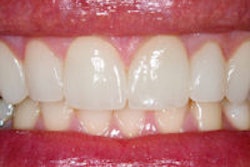People with dental amalgam have significantly higher levels of urinary mercury, according to a new study in the Journal of Occupational Medicine and Toxicology (August 29, 2013).
Canadian researchers analyzed the relationship between the number of dental amalgam surfaces and urinary mercury levels using data from a large philanthropic chronic disease prevention program in Calgary, Alberta.
The study group included 2,137 people who agreed to have a urinary analysis to determine their mercury levels from September 2010 through February 2013.
T-tests were used to determine if differences in urine mercury were statistically significant between persons with no dental amalgam surfaces and one or more dental amalgam surfaces. Linear regression was used to estimate the change in urinary mercury per amalgam surface.
The researchers found that urinary mercury levels (measured in µg/g-creatinine) were statistically significantly higher in participants with amalgam surfaces, with an average difference of 0.55 µg/g-creatinine.
Urinary mercury levels were also statistically significantly higher in those with dental amalgam surfaces following the oral administration of 2,3-dimercaptopropane-l-sulfonate and meso-2,3-dimercaptosuccinic acid, which are used to mobilize mercury from the blood and tissues.
The researchers concluded that people with seven or more dental amalgam surfaces have 30% to 50% higher urinary mercury levels than those without amalgams.
The findings were consistent with past studies that identified seven amalgam surfaces as an unsafe level of exposure to mercury vapor. The study suggests that continued use of silver amalgam dental fillings for restorative dentistry is a nonnegligible, unnecessary source of mercury exposure considering the availability of composite resin alternatives.



















